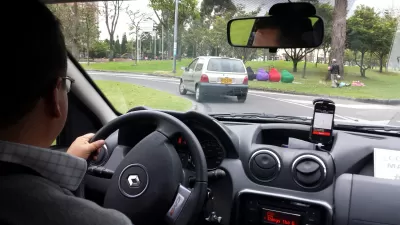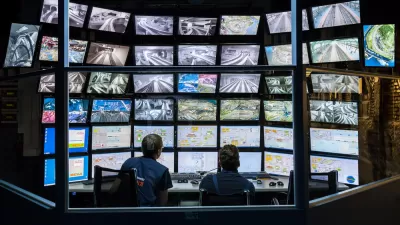Adam Greenfield looks at issue tracking systems for cities, and suggests that they can be taken a step farther by adding unique identifiers to urban infrastructure that automatically notifies city systems when problems arise.
"No issue-tracking system, even the best-designed and most cleverly devised, is going to quash the frustrations of city life completely. I believe, though, that the system I sketch out here would give cities a supple and relatively low-cost way to close the loop between Jacobian "eyes on the street," and the agencies that serve and are fully empowered to respond to them. What I've described here is, if nothing else, a way to harness the experience and rich local expertise of ordinary citizens.
But what if we took a single step further out? What if we imagined that the citizen-responsiveness system we've designed lives in a dense mesh of active, communicating public objects? Then the framework we've already deployed becomes something very different. To use another metaphor from the world of information technology, it begins to look a whole lot like an operating system for cities."
He calls this "read/write urbanism", and suggests that it could greatly enhance the way cities address urban issues.
FULL STORY: Frameworks for Citizen Responsiveness: Towards a Read/Write Urbanism

Alabama: Trump Terminates Settlements for Black Communities Harmed By Raw Sewage
Trump deemed the landmark civil rights agreement “illegal DEI and environmental justice policy.”

Planetizen Federal Action Tracker
A weekly monitor of how Trump’s orders and actions are impacting planners and planning in America.

The 120 Year Old Tiny Home Villages That Sheltered San Francisco’s Earthquake Refugees
More than a century ago, San Francisco mobilized to house thousands of residents displaced by the 1906 earthquake. Could their strategy offer a model for the present?

Ken Jennings Launches Transit Web Series
The Jeopardy champ wants you to ride public transit.

BLM To Rescind Public Lands Rule
The change will downgrade conservation, once again putting federal land at risk for mining and other extractive uses.

Indy Neighborhood Group Builds Temporary Multi-Use Path
Community members, aided in part by funding from the city, repurposed a vehicle lane to create a protected bike and pedestrian path for the summer season.
Urban Design for Planners 1: Software Tools
This six-course series explores essential urban design concepts using open source software and equips planners with the tools they need to participate fully in the urban design process.
Planning for Universal Design
Learn the tools for implementing Universal Design in planning regulations.
Clanton & Associates, Inc.
Jessamine County Fiscal Court
Institute for Housing and Urban Development Studies (IHS)
City of Grandview
Harvard GSD Executive Education
Toledo-Lucas County Plan Commissions
Salt Lake City
NYU Wagner Graduate School of Public Service




























